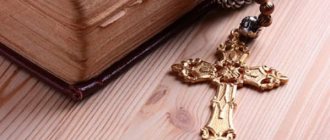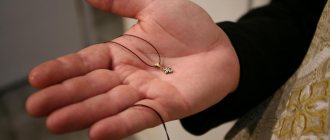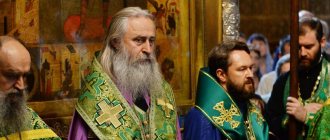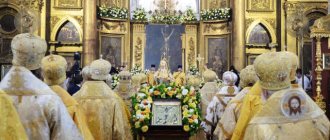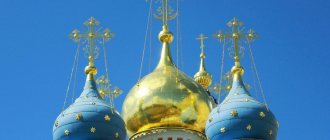Russian pectoral crosses, icons 14-15 centuries.
Early crosses and icons, as a rule, have a simple and, at first glance, completely uncomplicated shape.
But what subtle aesthetics and strength she has! It is inherent only in early ancient Russian things, in particular, Christian antiquities. Simplicity, ergonomics and asceticism of the decor do not distract from the main meaning, which is conveyed by a small product cast by a master jeweler. Pre-Mongol crosses and icons do not have at all that excessive ornamentalism, detailing and distracting games of shapes and outlines, as, for example, on Christian metal plastic of the 18-19 centuries. It was during the times of Peter and Catherine that the trends of the West began, which were noticeably reflected in Christian metal-plastics and iconography. Well, the development of technology has had an impact. In the Middle Ages, materials: bronze, and even more so imported silver, were inaccessible and expensive. Most of the items were most likely made of wood and were not preserved in the ground. But the very energy of modest small crosses and icons cast in bronze from that time (pre-Mongol), which were found in the fields and preserved in collections, is very great! After all, those were times when faith occupied a completely different place in society as a whole and in the life of each individual person. The external was far from secondary. There was no need for unnecessary decorations. Not everyone became Orthodox and not all at once. Pagan Slavs, infidels from the steppes, Latin crusaders from the west - anyone could bring death to a Christian of the Byzantine Orthodox tradition for his faith, and a cross on his neck was far from just an ornament... History and traditions of the Orthodox cross.
During the Sacrament of Baptism, a cross was put on every newly baptized person in Rus'. The pectoral, or body, cross was constantly worn on oneself and buried with it. In the first centuries of Russia’s adoption of Christianity, crosses were worn not on the body, but on top of clothing “as clear indicators of Christian baptism.” The most revered pectoral crosses with relics and shrines embedded in them were passed down to the family by inheritance. Crosses are known - historical relics that belonged to St. Sergius of Radonezh, St. Euthymius of Suzdal, Archpriest Avvakum, and others. Miraculous crosses are known - a copper-cast encolpion cross (from the Greek - “on the chest”) of the 12th century with the image of the Kupyatitsk Icon of the Mother of God and others. Russian people swore allegiance on crosses, and by exchanging pectoral crosses, they became cross brothers. When building churches, houses, and bridges, a cross was laid in the foundation. There was a custom to cast many crosses from a broken church bell, which were especially revered. The most ancient body crosses, from the 10th to 12th centuries, found on the territory of Chersonesos, Kyiv and other ancient Russian cities, were four-pointed with equal ends. They were made from various types of stone and wood, glass, amber and bone.
Cross among different peoples
Despite its simple form, the symbol is of great importance in the development of human society. Some sources claim that the official history of its origin begins in ancient Egypt and comes from the hieroglyph meaning the word life.
If we dig even deeper, the first image resembling a cross can be considered rock paintings in the form of a man with outstretched arms, belonging to the late Paleozoic era.
Numerous archaeological finds prove that the sign was used in all pagan rituals with the worship of the elements of nature long before the advent of Christianity.
- The peoples of South America believed that with its help evil spirits were driven out. For this reason, they placed newborn children under it.
- The Indian god Krishna had a cross on his hands. It is also the main religious symbol in the Christian church.
- Peoples professing the ancient religion of the Turks still wear it on their foreheads in the form of a tattoo or painted on it. This means submission to the great god Tengri - the owner of the Eternal Sky.
There are a huge number of types and names of the sign in the world. For the Assyrians, it meant the sun and was enclosed in a circle. The Egyptian image adds a ring or loop to it, calling the design the knot of life.
Among the Indo-European peoples, it is better known in the form of a swastika, which symbolizes happiness and eternity. The swastika with clockwise rays is often found in Hinduism and Buddhism. The cross was also often used in the emblems and coats of arms of orders and great rulers.
THE CROSS OF EVERY FORM IS THE TRUE CROSS
There are several types of crosses that differ in their purpose. This is a simple monolithic body cross (vest), a breast or pectoral cross, an encolpion or a reliquary cross, consisting of two leaves with a cavity inside, an icon cross and an altar cross. Body cross. The most widespread from ancient times to the present day is the custom of secretly wearing a cross under clothing. Such a cross is called a vest in Rus'. It is given by the Russian Orthodox Church to every Christian during the sacrament of Baptism. Using a cord or chain, they are worn around the neck and worn under clothing on the body. They are mainly made of copper and its alloys and are small in size (2.5-5 cm). Pectoral crosses. When wearing a cross over clothing, the symbolism of Christian service becomes the main thing. In this case, a person shows that all his activities in the world are carried out under the banner of the cross and are a service to Christ. Therefore, breast crosses, worn over clothing, were in Rus' mainly an accessory of the episcopal rank, as well as obligatory items of princely and royal vestments, and were also used as a reward for clergy. They noted the chosenness of God and the Christian nature of spiritual and temporal power.
Encolpion. Reliquary cross
This type of cross came from Byzantium. It originated from a four-pointed box with an image of a cross on the lid, in which ancient Christians kept particles of holy relics or lists of holy books. Later it acquired a cruciform shape. In Ancient Rus', folding reliquary crosses, along with other pectoral crosses worn over clothing, were items of princely and royal dignity. In addition, encolpions were sometimes worn by simple monastics, as well as pious laypeople, for example, pilgrims.
Old Russian crosses with curved rays
The bulk of ornamental decorations are of original Russian origin. These are crosses, the branches of which end in banked shapes, similar to the ends of a lily flower.
There are also crosses that end with three points - arranged in a triangle, a circle with three points on the outside, or peas.
Kyoto cross
They differ from pectoral crosses in their larger size and do not have an eyelet for a neck cord. They were placed on special shelves (cases) among the holy icons in the red corner, and attached to the doorposts of the home. They were used to crown home iconostases and take them with them on travels, hikes, and trips to create temporary altars. Altar cross. They are a necessary accessory of a Christian church. They are located on the altar throne next to the Gospel. Used during church services. They differ from pectoral and icon crosses in their larger sizes - from 30 cm and above.
Old Russian crosses with niello
A fairly common group of crosses. May include various combinations with the types listed above. For example, a lunnitsa with niello, or a cross with enamel and niello.
Examples of different dug crosses of the Kyrgyz Republic with prices are here.
More topics related to the tag “incomprehensible find” are collected here - definition of finds. Just look at the photos and remember what interesting artifacts look like. Happy digging everyone!
Official metal detectors Nokta & Makro. Sales, warranty, service, consulted by experienced diggers. Everything is in stock, real store.
↓↓↓ Now let’s move to the comments and find out the opinion of the experts. Scroll the page down ↓↓↓, there are reviews from diggers, MD specialists, additional information and clarifications from the blog authors ↓↓↓
Ancient Byzantine crosses
In Byzantium, this form was used to decorate church objects and Gospels. In the 9th century, by order of Empress Theodora, a Gospel was made, which was decorated with a gold cross ornament. There are many variants of crosses, and various graphic types are used in the design of awards for heroic deeds. Such items are of great value among cross collectors. No less valuable is the Order of St. George, First Class, because this award was extraordinary and in the entire history of its existence in pre-revolutionary Russia only a few dozen people had it, and in the collection of crosses it always takes the most worthy place. It is very interesting that when creating the Order of St. George, the graphic designers made a mistake. In the central medallion there is an image of a horseman who kills a dragon. However, the heraldry of that time suggests that the dragon is the force of Good, and according to legend, George defeated not a dragon, but a snake. It is also interesting that until 1856 the order was in force according to which this order, after the death of the owners, should be returned to the order's Duma. Therefore, it is almost impossible to get such an order for your collection, because... all copies are kept in museums or private collections. On our website you can see various collections of crosses, ranging from simple body crosses to valuable Orders of St. George.
Where to buy?
Our store (Moscow) offers you to buy a cross. In this section you will find a wide selection of items of this type. Among them there are both products of modern masters and antiques with a rich history.
In addition, from us you can purchase modern and antique furniture, paintings, coins and signs. We are ready to ensure the delivery of all goods purchased by you to other regions of Russia. And also perform a professional assessment of antiques and objects, conduct a gemological examination of jewelry.
Wearing rules
The responsibility for selecting and purchasing the first pectoral cross is assumed by the godfather. This is a mandatory attribute of the sacrament of baptism, but in adulthood a person acquires this amulet for himself, and this does not mean that such jewelry cannot be given as a gift.
A pectoral cross can be consecrated first in church, and then given to a loved one or loved one, thereby expressing love and a desire to protect him from all earthly troubles.
Wearing such jewelry is closer to the body, hiding it from prying eyes. Only priests are allowed to wear it over their clothes. It is strictly forbidden to wear such a symbol without prior consecration in the church. Many people believe that it is enough to sprinkle it with holy water at home, but this ritual will not give anything.
The sacrament of consecration includes not only sprinkling, but also the reading of a special prayer. The same should be done with icons, but if the decoration was originally purchased in a church shop, then there is no need to carry out the consecration ceremony - it has already been performed before putting the product up for sale, such laws apply in churches.
Losing a pectoral cross is not a big problem. If he is lost, then it is time for him to leave your life, and you will soon pick up an even stronger amulet.
When a person finds someone else’s pectoral cross, one should not be afraid to bring such decoration into the house. It must be re-consecrated in the church, after which it can be worn. You should not be afraid of other people’s troubles, which are supposedly transmitted through this decoration. After consecration, suspicious people can leave the cross in the church, and it will be given to those in need.
The power of the sign among the Slavs
The main group of researchers studying the graphical meaning of the intersection of two lines came to the conclusion that for our distant ancestors, such an arrangement of rays indicated the interaction of heaven and earth.
The vertical line is the sky, the horizontal line is the earth. The four directions that emerged indicated the presence of the main elements existing on the planet:
- fire;
- air;
- Earth;
- water.
Since ancient times, the Slavic Vedas have considered the cross a sign that carries a huge sacred meaning. They are sure that the word comes from the root “kres”, meaning fire, which was produced by rubbing crosswise folded sticks. The proof is the name of the tool for making fire - the armchair.
This statement is completely contrary to Christian ideology. There such an emblem is a symbol of torment and suffering, and not a sign of the sacred fire. Followers of Christ wear them on their bodies, trying to prove their love and reverence to God. In return they expect protection from any evil.
The four directions of the cross indicate the main elements existing on Earth
Among the Slavs, the cross indicates the interaction between spirit and matter. It signifies the symbolic movement of the planets around the sun, as well as the solar system itself revolving around the center of the galaxy. The energies circulating in and around the human body, according to the Slavs, are also located in the four-way direction of the rays.
The cross is a weapon against evil spirits
On Old Believer pectoral crosses (and they can be wooden and of considerable size), the most common kontakion from the canon of the cross is found. The entire text of the prayer or only the first lines is placed on the cross.
Also, on the reverse side of Old Believer crosses there is sometimes a prayer written that says that “the cross is an ulcer for demons.” And nowadays, a prayer or part of it is sometimes placed on Orthodox pectoral crosses.
Security and worship crosses
Symbols of ancient Rus' - crosses were used in Rus' both as a sure weapon against evil spirits and as a means of driving out demons. There were well-known proverbs: “They tied Satan with the cross,” “The devil was traveling to Rostov, but was afraid of the crosses,”
“The pig is afraid of the pestle, and the devil is afraid of the cross”, “From the devil with the cross, and from the pig with the pestle” (the pestle is a pole that was used to drive away pigs).
The inscriptions on the reverse side of the pectoral crosses also attributed spell power; they were attributed the properties of a talisman.
The amulet protected its owner from unwanted influences, smoothed out the disharmony between external and internal rhythms, and protected its owner from misfortunes, illnesses and the “evil eye.” The Slavs, our ancestors, considered and called the cross an “amulet.”
In Ancient Rus', there were guard crosses on the border of a state or principality. They were made of stone or wood, and their purpose was to protect the living from outside attack.
If the soul required prayer or rest on the road, then worship crosses at forks in the roads served this purpose. Worship crosses were also placed near churches and in other visited places, for example, at holy springs.
Sometimes a small building was built above them. Since the worship cross was often a place of refuge and rest for pilgrims, a well was built near it.
Votive crosses
At the beginning and end of some long journey, votive crosses were placed (built “by vow” - by promise). Votive crosses are prototypes of modern monuments and monuments.
They were made of stone or wood. Symbols of ancient Rus' - wooden crosses sometimes resembled residential buildings and, thanks to this, were included in the village ensemble.
On some of them you can see a simple floral ornament or a carved crucifix.
Chapels were often erected over votive crosses, which were often inferior in artistic value and historical significance to the crosses.
On the crosses you can find multi-colored inscriptions: green, red, blue. This served not only for beauty, but also for greater clarity of the inscriptions.
Sometimes these were real cryptograms: BBBB - “the scourge of God beats demons”; DDDD - “a good tree that vexes the devil.”
History of the symbol
It is a mistake to assume that the cross is a purely Christian symbol. It is found in many beliefs, although for followers of Christ it has a special meaning: the Son of God was crucified on the cross, by which he atoned for all human sins.
Since then, Orthodox crosses have been considered the most powerful security and protective sign. In Rus', a person with a pectoral cross could always receive help even from strangers, and without such decoration he could be suspected of heresy.
Crosses decorate icons, church utensils, church domes, and household items of believers.
Decoration material
When choosing the material for a pectoral cross, you need to remember that the main characteristics of this decoration are lightness and durability. We recommend choosing from:
- precious metals - platinum, gold or silver;
- base metals - brass or stainless steel;
- noble varieties of trees.
Precious and semi-precious stones or enamel can be used as decoration. The Church does not limit believers in the options for designing a pectoral cross; it only recommends wearing it with a pure soul and good thoughts, carefully looking after it and praying regularly.

